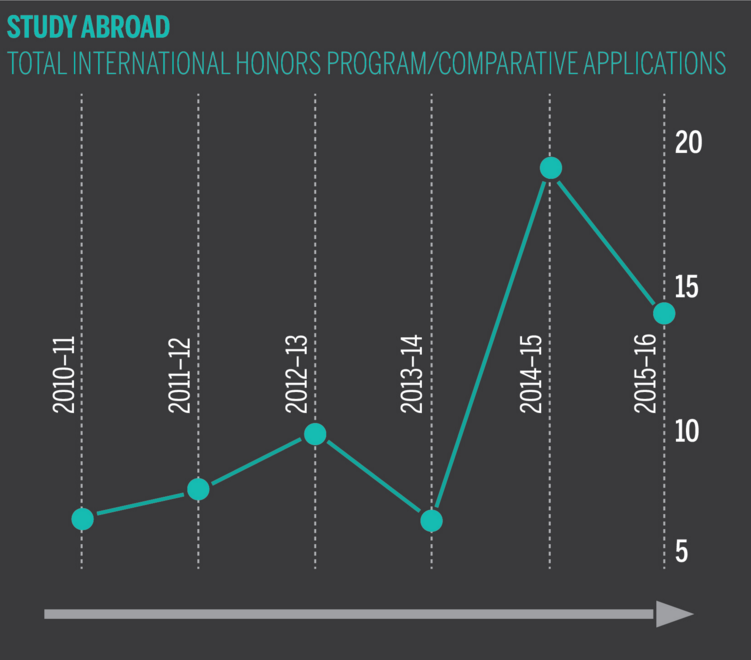
An increasing number of Yale students studying abroad are opting for programs that take place in multiple countries, as opposed to more traditional programs that stay in just one.
The number of students participating in comparative studies — programs that are held in more than one country but focus on a single theme — has doubled from seven to 14 since 2013 and now represents about one-fifth of all students studying abroad, according to Director of Study Abroad Kelly McLaughlin. In total, the Yale Study Abroad office approved 82 students for a year or term abroad for spring 2016 and the next academic year, though Associate Director of Study Abroad Susan Evans noted that not all of these students will ultimately choose to participate. Of these students, 12 were sophomores and the remaining students were juniors.
The applications to take a year or term abroad, which closed on Oct. 15, also showed a decline in the number of students applying to study abroad in France. This year, only two students applied for programs in France, whereas seven students participated in year- or term-abroad programs there last year. Though the number represents a sharp decrease, Evans said the countries where students are studying are not as representative of student tastes as the actual programs that they are pursuing in those countries.
“When you look at the actual programs or universities students are attending, it’s a different story,” Evans said.
Michelle Gere, associate director of study abroad, said students will often not be set on a certain region in which to study, but rather look for a program that matches their interests, regardless of location. This focus on theme rather than location, she said, may have contributed to the recent increase in popularity of comparative study abroad programs. Evans agreed, adding that this trend shows students are thinking first about what they want to study as opposed to where.
All of Yale’s comparative study programs are offered through the School for International Training, which conducts programs in environmental studies, economic development, global health and human rights, among others. One of these programs on cities in the 21st century takes participants to New York City, Sao Paulo, Cape Town and Ahmedabad, India, throughout the duration of the 16-week program.
Glory Norman ’16, who participated in SIT’s “Cities in the 21st Century” program, said she chose to do a comparative study because of the opportunity to immerse herself in the cultures of three different countries.
“I felt that it enhanced my understanding of urban issues because it allowed us to see that there are common themes across different countries and cultures, but also local nuances that affect what issues people deal with in a given city,” Norman said.
Ellie Dupler ’16, a global affairs major in the international development track, participated in an SIT program focusing on human rights last fall and said the program provided her with a sample of many different places.
She said that during her freshman and sophomore years, she completed global health and human rights internships in Sub-Saharan Africa but was concerned that her expertise was becoming too specialized and wanted to improve her career prospects if she ultimately chose to work in a different part of the world.
“I think comparative study is especially important in human rights and social justice issues,” Dupler said. “As an example, in studying refugee issues in Nepal and Jordan, I saw completely different domestic and international responses to the refugee situations in those countries that opened my eyes to how a single issue can manifest differently depending on the cultural norms and political climate of that country.”
Ana Lucia Carmelo ’16 said she participated in a comparative study program in public health last fall and noted that in the field of public health it is useful to compare countries since policy often depends on cultural factors that are unique to each country.
Evans said the fact that SIT programs are conducted in English might contribute to their popularity, while other study abroad programs may operate in the local language. She added that traditionally, the University annually sends many students to English-speaking countries, including Australia, South Africa and the United Kingdom, which is usually the most popular destination for students.
Twelve students have applied to programs taking place in the United Kingdom for spring 2016.







